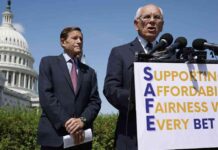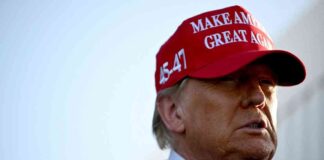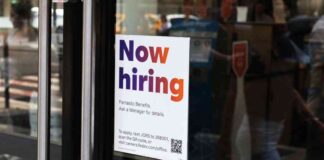The latest analysis from the Labor Department reveals a snapshot of the U.S. job market, indicating a steady pace with a hint of potential weakness on the horizon. In February, employers added 151,000 jobs, a decent number that fails to capture recent economic uncertainties. The timing of the survey, conducted in the middle of the month, overlooks federal job cuts that began around February 14, known colloquially as the “Saint Valentine’s Day massacre.” Despite this, the report paints a picture of increased job growth compared to the previous month when harsh weather conditions hampered construction activities.
Warning Signs of Economic Turbulence
Beneath the surface, warning signs loom large. According to the outplacement firm Challenger, Gray & Christmas, February saw the highest number of job layoffs since 2020, with 172,000 layoff notices issued, including over 62,000 in the federal government sector. This surge in job cuts has raised eyebrows, with Andrew Challenger noting the unexpected and concerning level of layoffs within a short span. The Trump administration’s consideration of extensive federal workforce downsizing, including tens of thousands of job cuts at agencies like the VA and IRS, adds to the apprehension.
Eddie Walker, a representative of affected IRS workers in Austin, Texas, sheds light on the personal toll of these layoffs, highlighting the emotional distress and financial strain experienced by individuals facing unemployment. Despite the painful repercussions for those directly impacted, it is essential to remember that federal employees represent a small fraction of the overall U.S. workforce, emphasizing the resilience of the majority employed in other sectors.
Private Sector Challenges and Uncertainties
While the private sector has largely weathered the storm, challenges persist, particularly in industries like restaurants, bars, and temporary services, which witnessed job cuts in February. The fluctuating nature of trade policies, exemplified by the recent tariff adjustments with Mexico and Canada, has created a climate of uncertainty for businesses. Andrew Challenger highlights the ripple effect of this uncertainty on corporate decision-making, with many large companies revising their growth forecasts amidst trade war fears.
In light of these factors, the hiring landscape remains cautious, with businesses wary of committing to significant expansions in the current volatile environment. As the job market teeters on the edge of uncertainty, the resilience and adaptability of both employers and employees will be crucial in navigating the evolving economic landscape.
As NPR’s Scott Horsley aptly summarizes, the monthly jobs report provides a valuable yet slightly outdated glimpse into the complex web of economic indicators. While the numbers offer insights into the prevailing trends, they underscore the need for vigilance and proactive measures to address the looming challenges on the horizon. Amidst economic flux and workforce realignments, the human stories behind the statistics serve as a poignant reminder of the personal stakes involved in every jobs report.






















